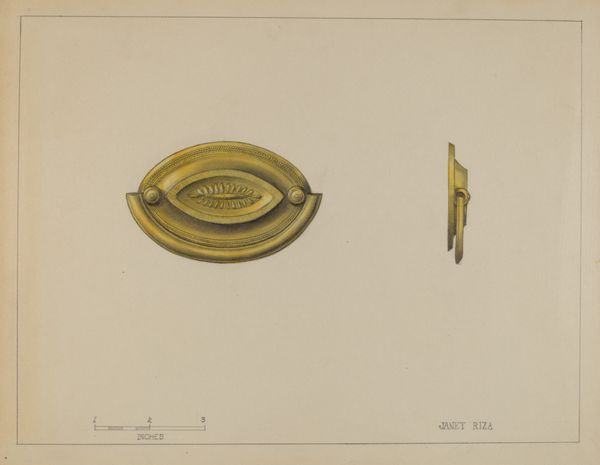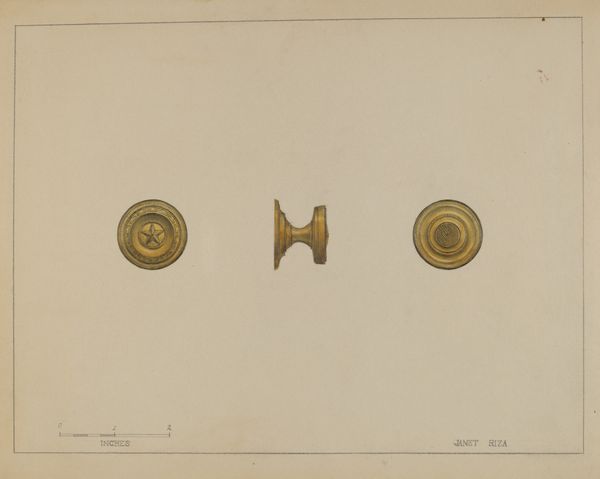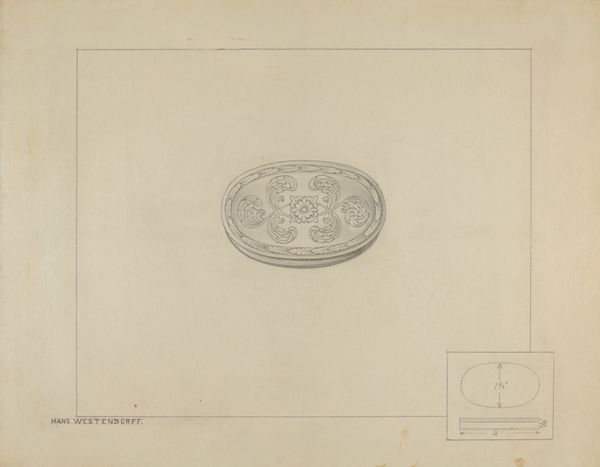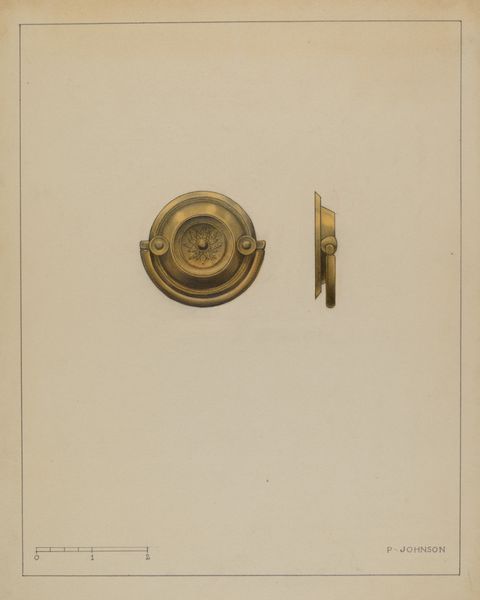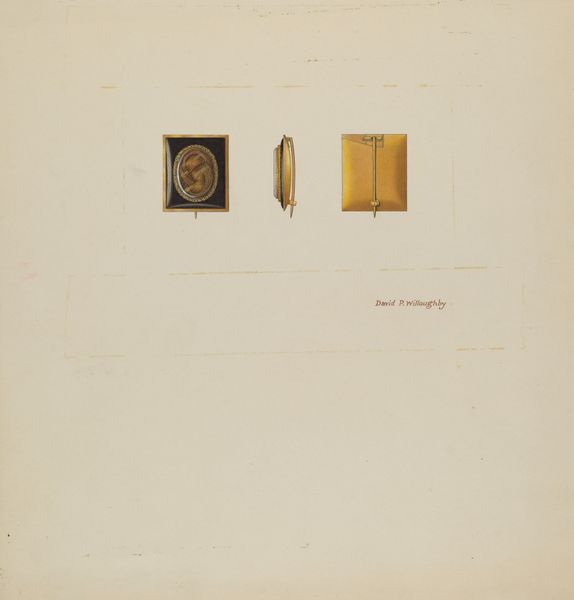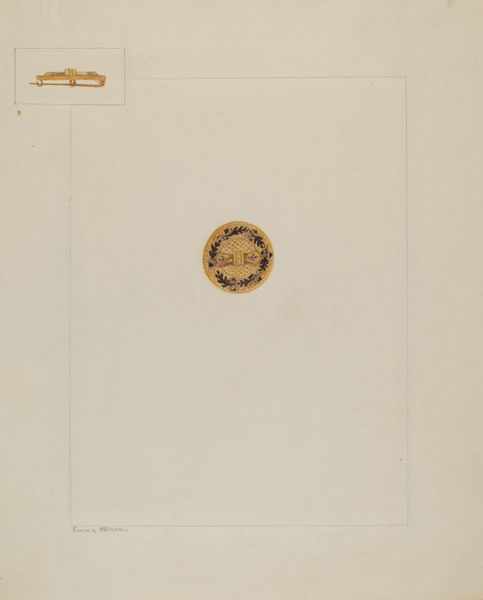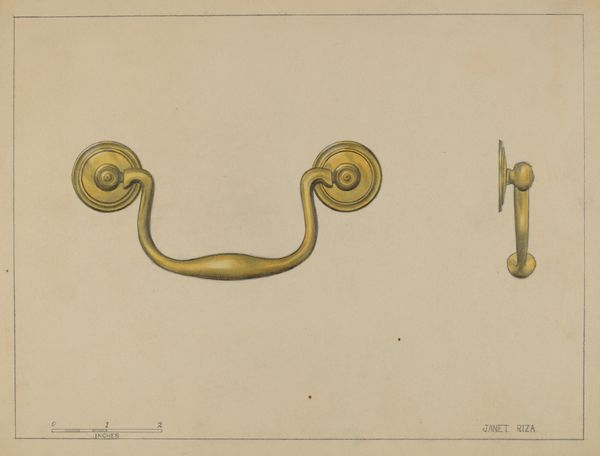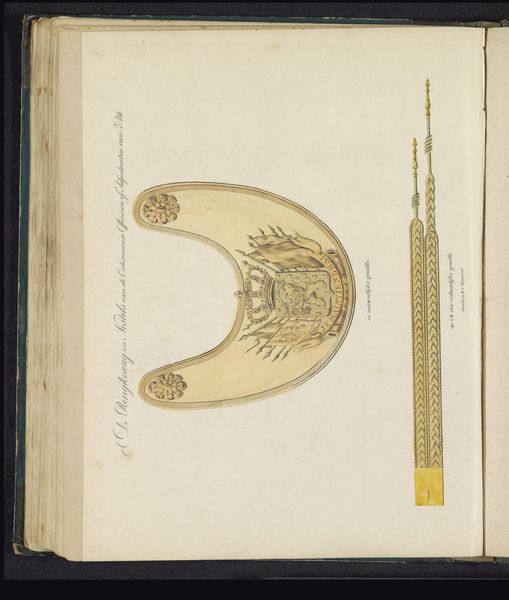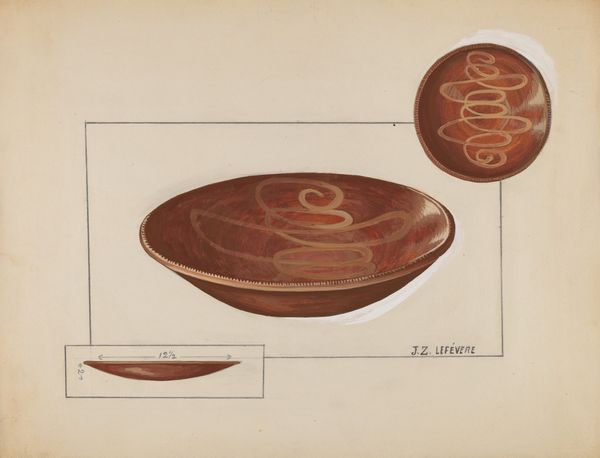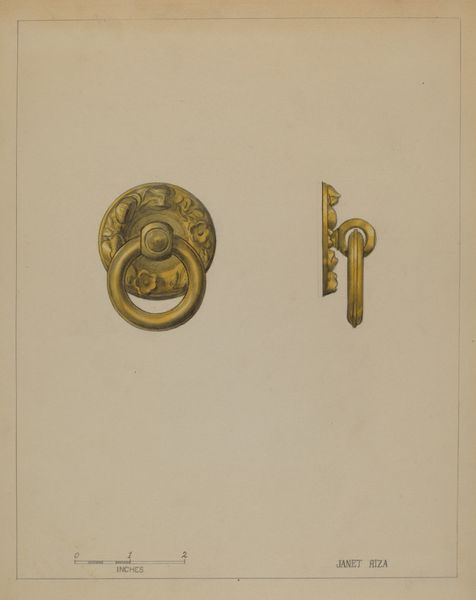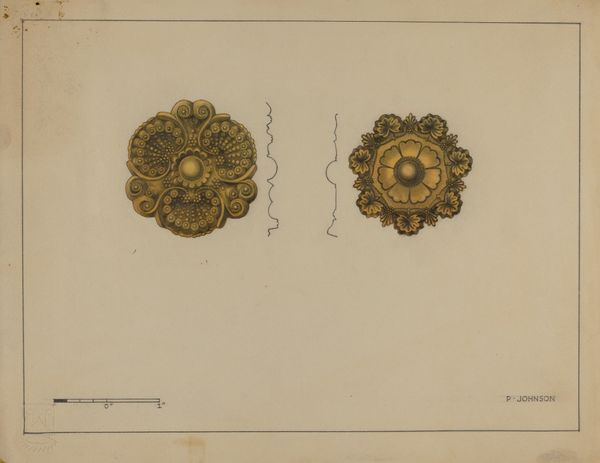
drawing, pencil
#
pencil drawn
#
drawing
#
form
#
geometric
#
pencil
#
academic-art
#
decorative-art
Dimensions: overall: 23 x 28.8 cm (9 1/16 x 11 5/16 in.)
Copyright: National Gallery of Art: CC0 1.0
Curator: Here we have "Drawer Pull," a pencil drawing made circa 1937 by Philip Johnson. At first glance, what do you make of this unassuming design sketch? Editor: Well, I find it quite elegant, in a subdued way. The tonal range is minimal; everything is rendered in shades of warm grey and ochre, with subtle shadows that make the form legible. But despite being just a design for an object of utilitarian nature, the sketch is aesthetically quite elevated. Curator: Absolutely, and part of this appeal is that a common drawer pull is reimagined with the visual language and vocabulary borrowed from the ancient world. Notice how the ovoid form references classical design and the small design element on the outer edge replicates ancient meander patterns. Editor: Exactly, the past literally informs the present in this subtle incorporation of geometric patterns, giving a rather standard piece of hardware the distinction of timelessness. Thinking about context, it feels connected to movements like Art Deco that reinterpreted classical motifs for the modern world. The small fruit basket-like symbol is a lovely touch. I wonder where this was meant to be installed? Curator: Likely in one of Johnson's many architectural projects from the late 1930s. Consider it in relation to other designs of that era; it certainly reflects the period’s eclectic tendencies. Moreover, this kind of decorative symbolism gives the everyday a touch of mythic narrative. We open drawers countless times; embedding these unconscious associations impacts our experiences on a deeply emotional level. Editor: It makes me think about access—literally pulling open a drawer to access what’s hidden or stored. Perhaps this is referencing larger themes around social visibility or who is afforded access, power, or privilege... What sort of meanings might everyday actions and objects evoke in society? Curator: That's quite an association! It points out the fascinating intersection between utility and iconography in everyday design. Johnson has managed to transform a functional element into something deeply meaningful and resonant. Editor: Indeed! Thinking about power dynamics expressed by accessing objects, structures, and places really makes you consider who benefits most. I find myself reassessing every mundane interaction... Curator: It just goes to show how even a simple drawer pull can speak volumes about form, function, and memory. Editor: A worthwhile exercise! And maybe next time, instead of grabbing a generic handle, someone might consider who built that handle, whose designs shaped its form and how it could influence lives for good.
Comments
No comments
Be the first to comment and join the conversation on the ultimate creative platform.
